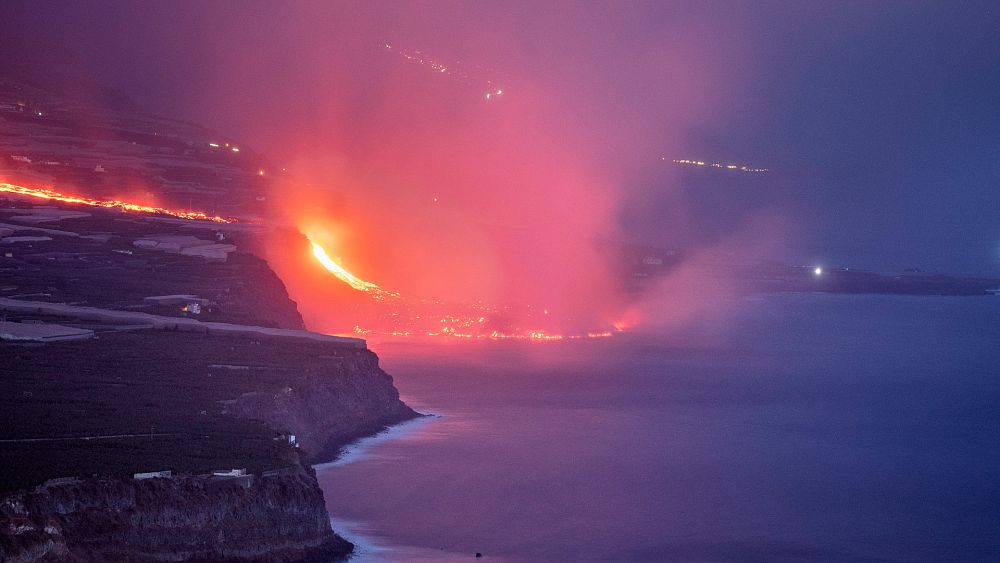
The surface of Spain’s La Palma island is expanding as lava from a volcano that erupted 11 days ago has reached the sea.
Copernicus, the European Union’s Earth observation programme, said Thursday that its satellite imagery showed a D-shaped tongue of molten rock building up on the island’s western shore measured 338 hectares (835 acres) by the end of Wednesday.
The lava has travelled about six kilometres and reached the sea on Tuesday evening.
The meeting between the lava and the sea did not produce explosions of volcanic material, as feared, but it did produce potentially toxic gases.
In order to avoid poisoning, the local government of the island asked the inhabitants of several districts of Tazacorte, the municipality where the lava flowed into the sea, to isolate themselves from their homes.
A safety perimeter with a radius of 3.5 kilometres has also been set up as well as a two nautical mile exclusion zone.
Authorities were on alert because Spain’s weather forecaster, AEMET, indicated the wind’s direction could change later Thursday and bring the toxic plumes toward the shore and farther inland.
Another source of concern is the direction the lava flow could take. Molten fluid emanating from the volcano that first erupted on Sept. 19 was still running downhill like a river and then tumbling over a cliff into the Atlantic. But uneven terrain could make the lava overflow its current path, spread to other areas, and destroy more houses and farmland.
If the magma will initially have a devastating but localised impact on the marine ecosystem, it could eventually have a beneficial effect by creating rocks that could be colonised by a number of species, according to scientists.
“The lava will form a rocky platform that will be a substrate for a number of marine species that will be able to colonise it in the future, i.e. in three to five years’ time,” Fernando Tuya, a researcher in biodiversity and conservation at the University of Las Palmas in Gran Canaria, said.
He added that phytoplankton could also be enriched by the iron contained in the magma.
In total, the lava now covers 476 hectares of this island of about 70,000 hectares, according to the local authority of La Palma.
The eruption, which did not cause any deaths or injuries, led to the evacuation of about 6,000 of the island’s 85,000 residents and the lava destroyed 855 buildings, according to Copernicus.